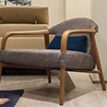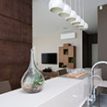Office:
2861 Fairview St undefined Tallahassee, New Mexico 86357 United States
P: +1 800 326 569
© 2025 by OceanThemes. All Rights Reserved

We work with ambitious brands that need courage, clarity & consistency in their video, inside & out.






4140 Parker Rd Undefined
Allentown, New Mexico,
31134, USA
2861 Fairview St undefined Tallahassee, New Mexico 86357 United States
P: +1 800 326 569
© 2025 by OceanThemes. All Rights Reserved
As the built environment turns toward renewable materials, few voices are leading with as much clarity and scientific rigour as Professor Mahmud Ashraf of Deakin University. A long-time advocate of bio-based alternatives, his research into engineered bamboo is helping shift its reputation from niche to necessary. Associate Professor Mahmud Ashraf with laminated wood research. How It Started: A Shared Vision for Better Building Our connection with Professor Ashraf began during the early planning of our new bamboo-structured warehouse. While many engineering professionals remained hesitant or timber-led, Professor Ashraf saw potential. “He didn’t just see it as ‘alternative’ he recognised the performance potential from day one,” Jennifer Snyders, CEO, House of Bamboo® His offer to independently test our laminated bamboo beams wasn’t just generous it was catalytic. It brought credibility, structure, and an openness to collaboration that set a new benchmark for the project. From Lab to Load-Bearing: Making Innovation Real At Deakin, Professor Ashraf leads a specialised research team focused on bio-based construction materials, including bamboo, hempcrete, and advanced timber composites. But his work stands apart because of its applicability. He doesn’t just theorise he tests, validates, and translates data into industry language. His research into laminated bamboo where slats are compressed under pressure to form strong, uniform panels is critical to its structural credibility. He’s helping the industry see bamboo not as a novelty, but a genuine solution in the materials mix. The Structural Truth of Engineered Bamboo Ashraf’s work dissects the real-life performance of engineered bamboo its load-bearing capacity, its tensile strength, its reliability across climates. Unlike timber, bamboo offers a regenerative cycle that’s far shorter, and structurally, it rivals its hardwood peers when engineered correctly. “It’s not about replacing timber it’s about expanding what’s possible in regenerative design,” Professor Mahmud Ashraf What’s Missing: A Framework for the Future In a recent industry presentation hosted by House of Bamboo®, Ashraf made a clear and urgent call: for bamboo to thrive in Australia’s built environment, we need more than interest. We need: Testing standards tailored to local climates National engineering codes for bamboo-based structures Stronger partnerships between industry and academia Education beyond ‘eco’ focused on performance, certification, and safety A Collaborative Force in a Changing Industry In a materials sector that can be slow to evolve, Professor Ashraf’s role is more than academic he’s an active participant in rethinking what we build with, how we certify it, and how we communicate its value. His ability to unite engineering data with market needs and do so with curiosity, clarity, and credibility makes him a valued partner in our mission at House of Bamboo®. “He’s helped put bamboo in the same conversation as timber not as an alternative, but as an equal.” House of Bamboo®
JED LONG’S OFF-GRID CABIN REIMAGINES THE FUTURE OF DESIGN WITH ENGINEERED BAMBOO AT ITS CORE In a recent update shared directly with House of Bamboo®, architect Jed Long, Co-Founder of Cave Urban, gave us a closer look at his latest project, a prototype cabin built from laminated bamboo in regional Australia. For over a decade, Jed has explored how bamboo can be used structurally, and this project marks an exciting step forward. This cabin isn’t just a building, it’s a material manifesto. In a world where building regulations can often limit material innovation, Jed Long posed a crucial question: ‘How do you build with bamboo in a highly regulated context?’ That question became the foundation of his next design journey. Images shared by Jed Long, Co-Founder of Cave Urban. The prototype cabin utilises a full laminated bamboo frame, demonstrating its structural integrity and suitability for prefabricated construction. Why bamboo, why now? The building industry faces an urgent need for low-carbon alternatives to timber. Jed explained, bamboo grows rapidly, absorbs more carbon than most trees, and offers structural performance comparable to steel and hardwood without the environmental cost. House of Bamboo® Products in Use Jed acknowledged that the integration of House of Bamboo®’s engineered bamboo products are being used throughout the cabin. From structural posts and beams to internal joinery, our bamboo plays a central role in both the build’s strength and its natural aesthetic. This project demonstrates just how adaptable and reliable bamboo can be even in modern construction settings. Images shared by Jed Long, Co-Founder of Cave Urban. Images shared by Jed Long, Co-Founder of Cave Urban. Laminated bamboo beams and vertical posts support the roof structure, offering strength with a natural finish. Images shared by Jed Long,Co-Founder of Cave Urban. Images shared by Jed Long,Co-Founder of Cave Urban. Precision-cut laminated bamboo members are secured with concealed joinery, highlighting the material’s consistency and performance in structural applications. A Shared Mission for Sustainable Building Jed’s goal to create modular, scalable bamboo buildings for the Australian market aligns perfectly with House of Bamboo®’s legacy. For over 50 years, we’ve supported architects, designers, and builders with high-quality, sustainable materials. This project demonstrates that bamboo is no longer an emerging alternative it is a viable material for contemporary architecture and interior environments. Together, we’re laying the foundation for a future where bamboo stands proudly alongside timber, steel, and concrete in shaping the built environment. Images shared by Jed Long,Co-Founder of Cave Urban.